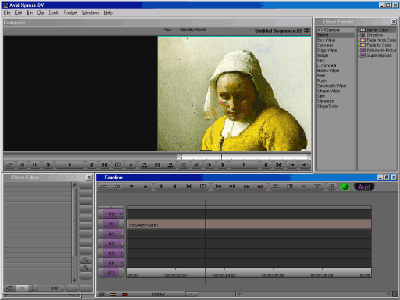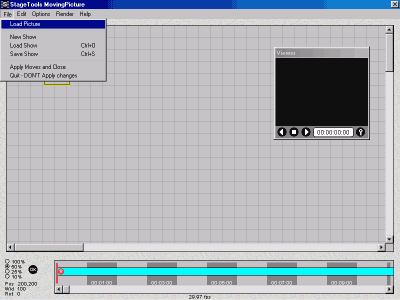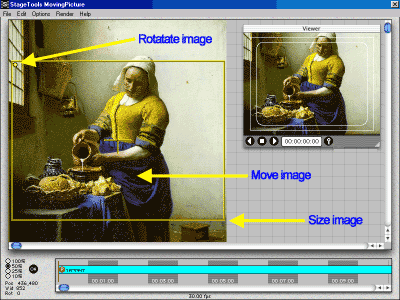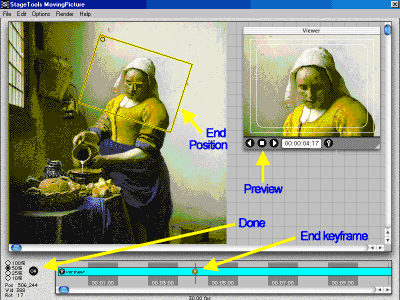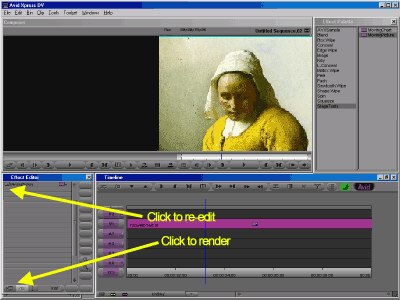tutorial
for
AvidThe screens for the various Avid Editors may differ (i.e. Windows, Mac, Symphony, Media Composer and XPress), but they all work look like the Windows DV shown below. This tutorial will show you how easy it is to make a simple move from the Avid timeline. Check out the QuickStart Guide for further details, as well as the Frequently Asked Questions and Streamlining the Avid Off/Online WorkFlow.
Open up Avid and place a clip on the timeline.
The clip should be as long as you want the move to be.NOTE: This should be video clip or a video-size still.
Placing the hi-res still will slow rendering
and may cause other problems.Highlight the clip by clicking on it.
Make sure the Effects palette is visible.
Scroll down the list until you come to one called "StageTools".
(click here if it is not in the list)
To the right, a list of plug-ins by StageTools will appear
Drag MovingPicture over your clip.
The MovingPicture screen will appear.
Click on the Load Picture item in the File menu.
Choose a picture to move.
Drag yellow box to frame up start of move.
Choose time for end of move by clicking on Timeline.
Drag yellow box to frame up the end position of move.
Preview your move with the Viewer player buttons.
Click on the OK button to return to the Avid.
Click on the Render button to render the clip.
You can re-edit the moves by clicking on the button in the Effects Editor.
Close your editor if it is open.
Windows
Files are in self-extracting ZIP format to speed up the downloading process. Simply double click on the .exe file and it will ask what folder you what to put them in. Select the AVX_Plugins folder.
Drag the help file, called Moving.chm to the C:\ folder (the root directory of the c: drive).
Macintosh
Files are in a SIT format. Some browsers will automatically decompress the .sit file into a folder. If you do not see a new folder with the same name as the SIT file you just downloaded, drag the SIT file over Un-StuffIt (version 7).
Inside the folder is the help file, called QuickStart.html, a read-me file called ReadMe.rtf (classic OS is called ReadMe.txt) and the application itself, called MovingPicture (or MovingPicture.bundle for OSX). Move the resulting MovingPicture file into the AVX_Plugins folder.
Both
Restart the Avid program.
Opening Avid's Effects Palette should show the "StageTools" category in the left column and "MovingPicture" in the right.
If you are unable to select the MovingPicture effect, make the effect Palette larger, since it is often the last entry in the list.
